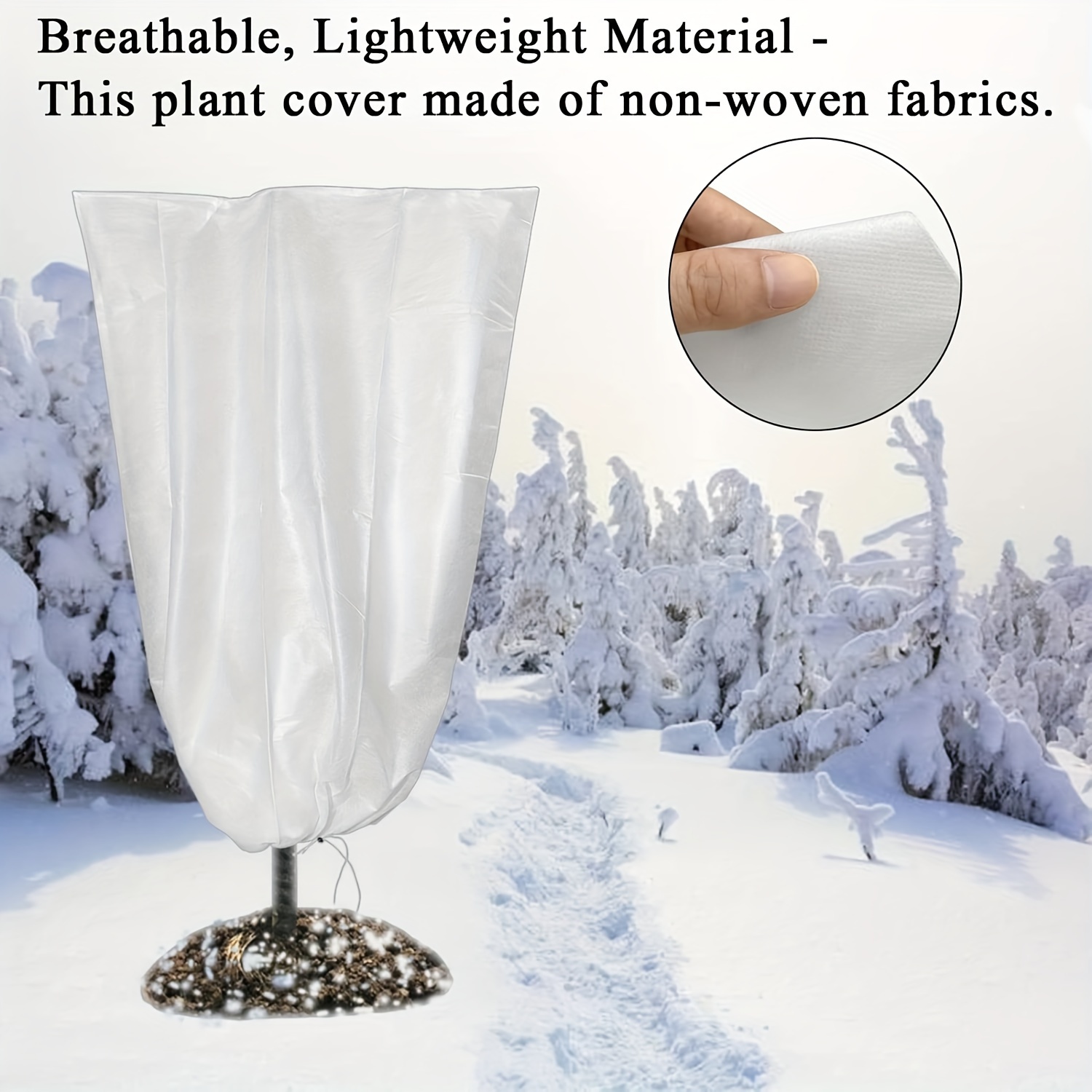Non-woven fabric plant cover freeze protection refers to the technology or method of using non-woven fabric materials as coverings to provide cold and frost protection for plants. The following details explain its material characteristics, anti-freeze principles, advantages, application scenarios, and precautions:
Non-woven fabric, also known as non-woven cloth, is made from polymer materials like polypropylene (PP) through processes such as spunbond and melt-blown. It has the following features:
Lightweight and breathable: It is light, preventing damage to plants from pressure; the pores between fibers allow air and water vapor to circulate, avoiding plant diseases caused by stuffiness and humidity.
Good heat preservation: The fiber structure forms an air layer, blocking external cold air while reducing heat loss from plants, creating a local "greenhouse effect".
Moderate light transmittance: It allows partial sunlight to pass through, meeting the photosynthetic needs of plants and preventing excessive elongation due to long-term coverage.
Durable and eco-friendly: It is tear-resistant, anti-aging, and reusable; some non-woven fabrics are biodegradable, friendly to the environment.
Physical isolation and heat preservation:
When non-woven fabric covers the plant surface, it acts like a "thermal coat," blocking direct contact between external cold air and plant branches, leaves, and roots. This maintains the temperature around the plant 1-3°C higher than the outside, reducing the risk of frost damage.
Reducing water vapor condensation:
At night, when temperatures are low, water vapor in the air easily condenses into frost on the plant surface. Non-woven fabric can absorb part of the water vapor, reducing the probability of frost directly contacting the plant and protecting cells from ice crystal damage.
Comparison Dimension | Non-woven Fabric | Plastic Film | Straw Mat/Sack |
Air permeability | Good, less likely to cause stuffiness
| Poor, prone to high temperature and humidity
| Average, prone to rot when wet
|
Light transmittance | Moderate, does not affect photosynthesis
| High, but slightly worse thermal insulation at night
| Poor, long-term coverage easily blocks light
|
Durability | Can be reused for 1-2 seasons
| Prone to damage, requiring frequent replacement
| Prone to rot when wet, short service life
|
Environmental friendliness | Partially biodegradable, low pollution
| Difficult to degrade, prone to white pollution
| Natural materials, can be composted
|
Operational convenience | Lightweight and easy to lay, can be cut into any size
| Needs edge fixing, easily blown away by wind
| Heavy, troublesome to lay
|
Home gardening: Protecting potted flowers, vegetables (such as strawberries, lettuce), seedlings, etc., especially in regions with low temperatures but not extreme cold (e.g., temperate and subtropical winters).
Agricultural production: Used for cold protection of seedlings in orchards (such as citrus, grapes) or nurseries, or to protect new shoots during late spring cold snaps in spring.
Urban greening: Wrapping young street trees, shrubs, or covering flower bed surfaces to prevent soil freezing from affecting roots.
Select specifications: Choose non-woven fabric with appropriate grammage (e.g., 50-100 g/m², higher grammage for lower temperatures) based on the local minimum temperature.
Covering methods:For low plants: Directly spread the non-woven fabric over the plants, compressing the edges with soil or stones to avoid air leakage;
For tall plants: Wrap the non-woven fabric around the trunk or branches with ropes, leaving a ventilation opening at the top to prevent excessive internal humidity caused by day-night temperature differences.
Combine with other measures: Before covering, water with antifreeze or mound soil to enhance cold protection; when the temperature rises during sunny days, uncover the non-woven fabric for ventilation to prevent plant damage from stuffiness.
Avoid long-term coverage: Remove the non-woven fabric in a timely manner after the temperature rises; otherwise, long-term shading may cause excessive elongation and reduced resistance in plants.
Prevent water accumulation: Check the coverings during rainy or snowy days to avoid water accumulation crushing the plants or causing the non-woven fabric to sag due to increased weight.
Regular inspection: Observe plants for signs of mildew or pests, especially in high-humidity environments, and strengthen ventilation.

Helps retain warmth and prevent freezing damage.
Allows air, sunlight, and moisture to reach plants while blocking frost and pests.
Ensures a secure fit around plants to prevent wind displacement.
Protects against sun damage, heavy wind, and light snow.
Made from long-lasting fabric that can be used multiple seasons.
It will decompose naturally after use and will not pollute the environment
1.According to the required color and gram weight to produce high-quality polypropylene non-woven fabric.
2.Cut the non-woven fabric according to the required size.
3.Sewing, sewing according to the requirements of different processes, such as lock sewing, sewing, etc., while adding zippers and drawstrings.
4. Fold and pack, fold and pack the product according to the required size.
Material: 100%Polypropylene and UV
Weight: 15gsm-80gsm (0.6oz/yd²to3.4oz/yd²)
Colour:white,Green(customizable)
Size:0.8*1m,1m*1.5m or as your request
Packing: polybag out side or in carton(customizable)
OEM/ODM:acceptable
Sample:For free
Frost Protection: Shields plants from sudden temperature drops in winter.
Pest Prevention: Keeps insects, birds, and animals from damaging plants.
Season Extension: Helps plants grow earlier in spring and stay healthy into fall.
Small Tree & Shrub Protection: Ideal for citrus trees, roses, and ornamental plants.
Greenhouse & Outdoor Use: Adds an extra layer of insulation for delicate plants.
HYFabric Supply is a professional non-woven fabric manufacturer providing comprehensive non-woven fabric solutions for specifict applications.
HYFabric Supply has 10 years experience in manufacturing non-woven fabrics.
HYFabric Supply has more than 50 professional R&D experts and a group of over 200 workers.
HYFabric Supply owns more than 5 manufacturing lines to ensure smooth delivery.
HYFabric Supply product has competitive price compared with other suppliers.
If you are looking for non-woven fabrics for your project, feel free to contact us. Our professional sales team will reply within 48 hours.
No. 3 Luoqian Street, Beiluo Town, Shouguang City, Weifang City, Shandong Province